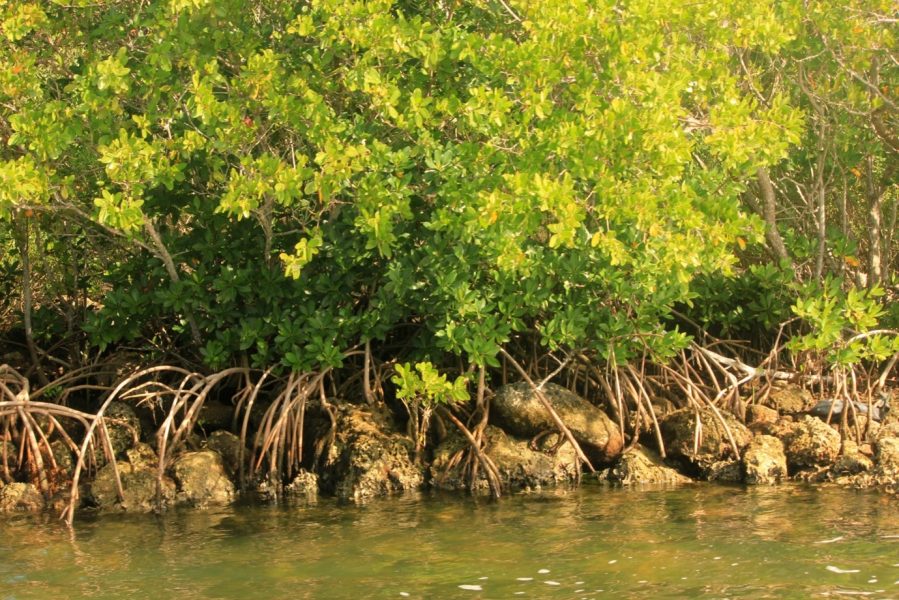
Mangrove key to coast conservation; Odisha shows big gains in cover
Odisha's significant gain in mangrove cover has mainly been due to natural regeneration and plantation activities in suitable lands like on the banks of the rivers near the estuary and on intertidal mudflats inundated by seawater every day

Mangroves are swamp forests of woody plants located between land and sea on the tropical and warm temperate coasts. They are specially adapted to harsh environments where no other plant species can survive.
Indonesia has the most extensive mangroves, with 30 per cent global coverage, followed by Brazil, Australia, and India. In India, mangrove forests are distributed mainly on the high-energy tidal coast, having two extreme conditions: humid and wet in the Sundarbans, having rich biodiversity, and arid in Gujarat with low biodiversity.
Along with providing many ecosystem services to the coastal communities, they act as a buffer zone against storm surges and floods.
Multiple benefits
It has been seen time and again that coastal habitats such as coral reefs, mangroves, and lagoons are the best defence against coastal erosions and sea storms, as they deflect and absorb much of the energy of the sea storms.
Aerial roots of the mangrove trees help the plant to breathe. They have unique mechanisms that make them salt tolerant. With the help of reverse osmosis, they take in salt and excrete it through salt glands. In addition to this, they provide support to the trees against currents and storms.
A UNESCO world heritage site, the Sundarbans is the largest intact tract of mangrove swamp forest in the world. The density of the trees and the variety of tree species in the swamp forests of Sundarbans reduce the water inflow. It not only reduces the severity of the storm; its trees can shorten cyclonic waves by 60%.
Also Read: Indian researchers discover new way to solve food crisis by mangroves
Amphan impact
The Amphan cyclone that hit the states of West Bengal, Odisha and parts of Bangladesh in May 2020 eroded nearly 69% of Sundarbans shorelines.
Normalized Difference Vegetation Index (NDVI) taken during May 2020 and June 2020 indicated massive fragmentation and degradation of mangrove plants and showed a change in the land cover from dense to sparse. Experts believe that the presence of mangrove forests around the coast reduced the storm’s effect significantly.
It is worth noting that after observing how the mangroves of Sundarbans acted as a natural buffer against equally devastating cyclone Aila in 2009, residents of three villages in the region decided to plant mangroves on 75 hectares.
It was observed that Amphan could not destroy the riversides with mangrove covers, whereas the embankments without them had been washed away.
However, deforestation, change in land-use patterns, and human activities, including shrimp cultivation, have reduced the extent of the mangroves of Sundarbans.
Unplanned aquaculture and tourism activities have also affected the health of the trees.
How the states performed
The Forest Survey of India (Ministry of Environment Forest and Climate Change) has published the 2021 ISFR (India State of Forest) Report, which says there has been a 17-sq km net increase in the mangrove cover compared to the 2019 survey.
Odisha shows a significant gain in mangrove cover, mainly due to natural regeneration and plantation activities in suitable lands like on the banks of the rivers near the estuary and on intertidal mudflats inundated by seawater every day.
The major states that have mangroves include West Bengal (42.33%); Gujarat (23.54%); Andaman & Nicobar Islands (17.34%); Andhra Pradesh (8.11%); Maharashtra (6.49%); and Odisha (5.3%). Others are Goa; Daman & Diu; Puducherry; Karnataka; Kerala; and Tamil Nadu.
The South 24 Pargana district (comprising Sundarbans) alone accounts for 41.74% mangrove cover of the country. This also signifies the resilience of the mangrove forests that even after repeated sea storms, they could regrow in these areas.
Three management strategies
In India, three management strategies – promotion, regulatory, and participatory have been adopted and these may have contributed to the success of mangrove forests.
In an article published in Current Science (March 10, 2018), K Kathiresan of the Centre of Advanced Study in Marine Biology, Annamalai University, writes how the best practices of conservation and management of mangroves like canal bank planting with ‘Fish Bone’ design for mangrove restoration; Maharashtra Mangrove Conservation Model; Kannur Mangrove Mission; and Participatory Mangrove Management Model have worked successfully in the rejuvenation of the mangrove forests.
Reducing eEmissions from deforestation and forest degradation plus the sustainable management of forests and the conservation and enhancement of forest carbon stocks is a global effort to mitigate climate change.
Forests play a fundamental role in this by removing CO2 from the atmosphere and storing it in their biomass and soils. Restoration of mangroves is undoubtedly an effective tool for this effort.
The Government of India, along with other voluntary organisations and the local society, has launched ‘Swachh Sagar, Surakshit Sagar’ (Clean Coast Safe Sea), a 75-day citizen-led beach clean-up campaign along India’s nearly 7500-km long coastline.
Mangroves are the ‘silent green sentinels’ of our coasts. They protect our coastal areas from erosion by stabilizing the shorelines with their specialized root systems. A similar awareness-raising campaign for mangroves’ restoration will not only save the sea, but will also protect the coasts and associated communities.

